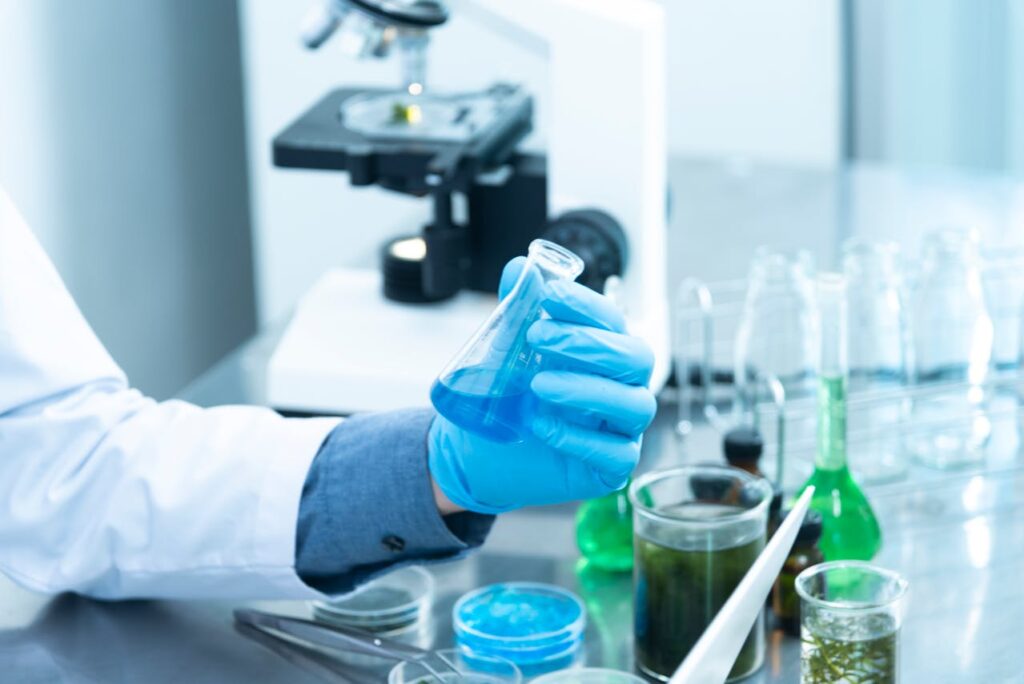The modern-day manufacturing industry is heavily reliant on using various cleaning chemicals to enhance product quality, from everyday products to innovative tech devices. These chemicals, ranging from solvents to detergents, must be applied correctly to ensure product quality, equipment functionality, and meet industry-specific standards.
This reliance on chemicals in manufacturing can significantly impact environmental sustainability, health, and industrial safety. Manufacturers should know the implications of using industrial chemicals so that products are safe, high-quality, and eco-friendly.

Chemicals Are Important for Making Anything
Chemicals are essential in every manufacturing process for cleaning, bonding, and coating to prevent damage to product quality, with different chemicals working best for metal, plastic, wood, etc. Properly used chemicals make products more robust, convenient, and better looking. For UPVC products, on the other hand (unplasticised polyvinyl chloride), unique solutions are applied to maintain the materials and clean them without causing any damage.
The Effects of Using the Wrong Chemicals
- Breaking Down
Incorrect use of chemicals can lead to the deterioration of materials. For example, cleaning plastic with a solvent-based cleaner can eventually crack, causing the material to become brittle or disintegrate; this weakens the product but can also be dangerous in items like car parts or airplane components.
- Surface Damage
The wrong chemicals can damaged surfaces and cause them to discolour, scratch or rust. Generally speaking, acidic cleaners on metal will rust, and alkaline cleaners may discolour or pit anodised aluminium (and we can go over that if you have questions). This damage not only makes products look deteriorated but also damages their functionality and causes a slippery finish.
- Bad Reactions
Problems. In the worst case scenarios, bad chemical reactions lead to harmful by-products, property changes in material, or dangerous processes. For example, running a chlorine-based cleaner over stainless steel can lead to pitting corrosion because of the hydrochloric acid that will be generated. These changes weaken the material and can be potentially hazardous when high chemical stability is required.
Environmental and Health Problems
- Toxic Emissions
Using non-specified chemicals can create toxic emissions. Volatile Organic Compounds are contained in many industrial cleaners and solvents. When misused, these chemicals can release dangerous fumes into the air, potentially harming workers. Long-term exposure can be harmful and affect symptoms like difficulty breathing, irritation, skin allergies, etc.
- Waste Management Issues
Waste management problems may arise due to the misuse of chemicals. Residual chemicals unsuitable for typical waste disposal can cause water, land, and air contamination; this would be a long-term problem, causing environmental and human health pollution. A way of preserving the environment is getting manufacturers to minimise hazardous chemicals and dispose of them so pollutants aren’t thrown in the open ground to protect the environment.
Best Practices for Using Chemicals in Manufacturing
Manufacturers should pay more attention to material compatibility; listed below are two ways to accomplish this. Implementing best practices when using industrial-grade chemicals requires a good understanding of both the materials and chemicals involved in the proper chemical structure they use. Testing and MSDS can help you avoid incompatibility issues.
- Proper Training and Rules
Employers should ensure employees handling chemicals are adequately trained to prevent potential incidents. This training should consist of proper application, being potential side effects, and knowing what to do in case of an emergency. Adhering to strict protocols and practising regular training can help lessen the chances of chemical mismanagement.
- Tools for Continual Testing and Maintenance
Regular monitoring and maintenance of equipment and materials can help catch early signs of chemical damage. Inspections can spot issues like corrosion, surface damage, or weakening before they get serious. This proactive approach allows for timely fixes, keeping products safe and durable.
Conclusion
Chemicals are a necessary element in modern manufacturing, but when mishandled, they have the potential to cause severe issues. Manufacturers must use chemicals properly, or they could damage their materials, pollute the eco-systems, and endanger human health. This includes ensuring they are chemically compatible, properly training workers, and conducting regular maintenance.
For those working with UPVC products, using the right UPVC cleaners is a great example of how specialised chemicals can keep products in top shape. Understanding and carefully managing chemical use is key to the manufacturing industry’s success while staying safe and eco-friendly.

